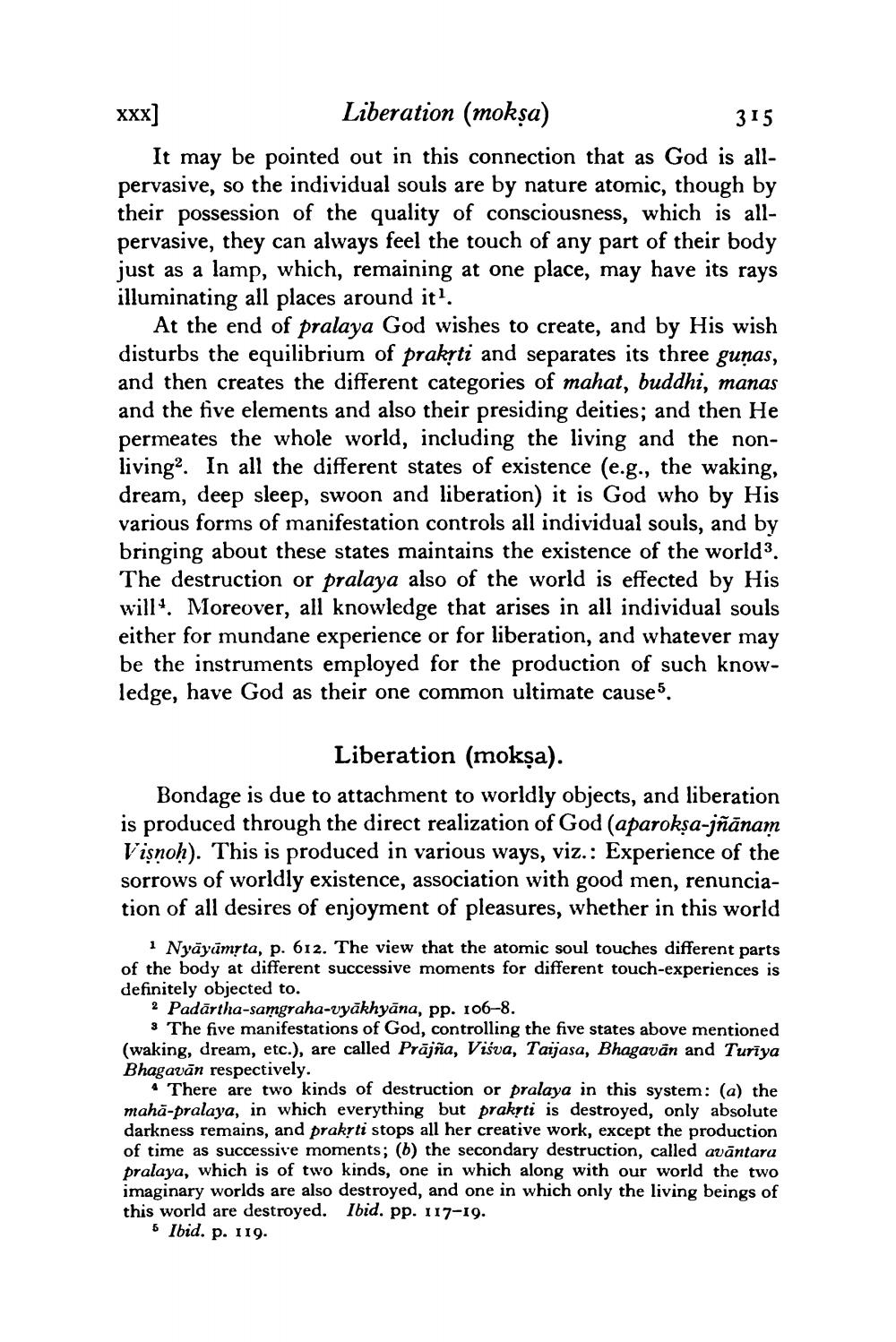________________
xxx]
Liberation (mokṣa)
315 It may be pointed out in this connection that as God is allpervasive, so the individual souls are by nature atomic, though by their possession of the quality of consciousness, which is allpervasive, they can always feel the touch of any part of their body just as a lamp, which, remaining at one place, may have its rays illuminating all places around it?.
At the end of pralaya God wishes to create, and by His wish disturbs the equilibrium of prakņti and separates its three guņas, and then creates the different categories of mahat, buddhi, manas and the five elements and also their presiding deities; and then He permeates the whole world, including the living and the nonliving? In all the different states of existence (e.g., the waking, dream, deep sleep, swoon and liberation) it is God who by His various forms of manifestation controls all individual souls, and by bringing about these states maintains the existence of the world3. The destruction or pralaya also of the world is effected by His willé. Moreover, all knowledge that arises in all individual souls either for mundane experience or for liberation, and whatever may be the instruments employed for the production of such knowledge, have God as their one common ultimate cause.
Liberation (mokşa). Bondage is due to attachment to worldly objects, and liberation is produced through the direct realization of God (aparoksa-jñānam Vişnoḥ). This is produced in various ways, viz.: Experience of the sorrows of worldly existence, association with good men, renunciation of all desires of enjoyment of pleasures, whether in this world
i Nyāyāmīta, p. 612. The view that the atomic soul touches different parts of the body at different successive moments for different touch-experiences is definitely objected to.
2 Padārtha-samgraha-vyākhyāna, pp. 106-8.
3 The five manifestations of God, controlling the five states above mentioned (waking, dream, etc.), are called Prājña, Viśva, Taijasa, Bhagavan and Turīya Bhagavān respectively.
4 There are two kinds of destruction or pralaya in this system: (a) the maha-pralaya, in which everything but prakti is destroyed, only absolute darkness remains, and prakyti stops all her creative work, except the production of time as successive moments; (b) the secondary destruction, called avāntara pralaya, which is of two kinds, one in which along with our world the two imaginary worlds are also destroyed, and one in which only the living beings of this world are destroyed. Ibid. pp. 117-19.
5 Ibid. p. 119.
o hints; (b) the secreative work, exoyed, only abs




